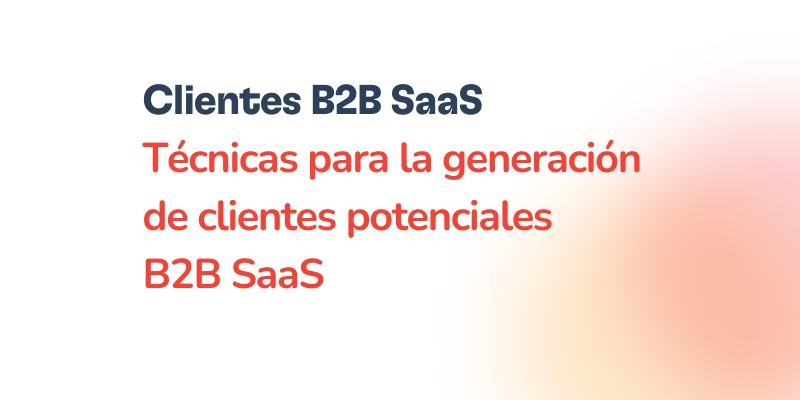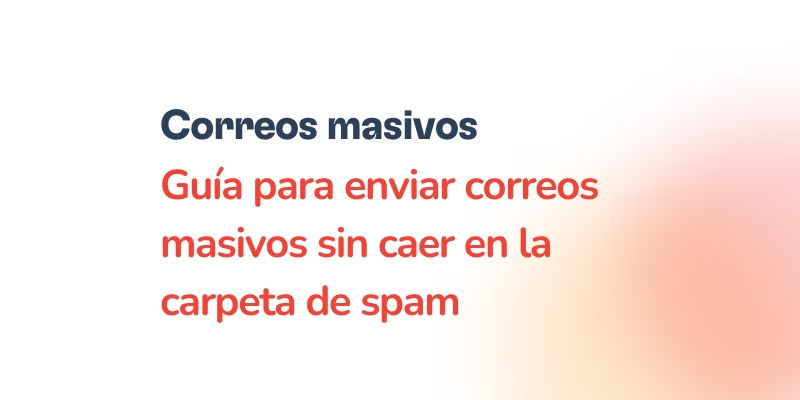Email has become an essential tool for communication, especially in the business world. Cold emailing is a powerful method for reaching out to potential clients, partners, or collaborators. However, composing a cold email that elicits a response can be challenging. To increase your chances of success, follow-up templates for cold email play a crucial role. In this comprehensive guide, we will delve into the world of cold email follow-up templates, providing you with the knowledge and expertise to craft impactful messages that generate positive outcomes.
Follow-up templates for cold email: The basics
Crafting a compelling cold email can be an art form, but it all starts with a solid template. Here, we’ll explore the fundamentals of creating effective follow-up templates for cold email.
Understanding the Importance of Follow-Up Emails
In today’s fast-paced world, people receive numerous emails daily. A follow-up email is a crucial component of your outreach strategy, ensuring your initial message doesn’t get lost in the digital noise. An effective follow-up demonstrates persistence and shows your recipient that you value their time and interest.
Structuring Your Follow-Up Emails
An organized and well-structured follow-up email can make all the difference in catching your recipient’s attention. Start with a personalized greeting, reference your initial email, offer value, and end with a clear call-to-action. An organized approach helps maintain clarity and keeps the recipient engaged.
Personalization: The Key to Success
People appreciate authenticity, and personalized follow-up emails can significantly improve your response rates. Address your recipient by their name, acknowledge their specific interests or needs, and tailor your content to align with their preferences.
Crafting Compelling Follow-Up Templates
Now that we’ve covered the basics, let’s dive into the essential elements of crafting compelling follow-up templates for cold emails.
Building Rapport and Trust
Trust is the foundation of any successful business relationship. Your follow-up email should focus on building rapport and establishing trust. Share relevant success stories, testimonials, or case studies to demonstrate your expertise and credibility.
Adding Value with Each Follow-Up
Every follow-up email should provide additional value to the recipient. Whether it’s sharing valuable resources, insights, or solutions to their pain points, offering something of worth encourages your recipient to engage further.
Utilizing Effective Call-to-Action (CTA)
A clear and compelling call-to-action is essential in your follow-up email. Make it easy for the recipient to respond by providing clear instructions and a direct way to take action.
Injecting Personality into Your Emails
While maintaining professionalism, don’t be afraid to showcase your personality. Injecting humor or warmth into your follow-up emails can make them more memorable and enjoyable for the recipient.
Overcoming Common Follow-Up Challenges
Despite your best efforts, you may encounter challenges in your follow-up strategy. Let’s explore common obstacles and how to overcome them.
Dealing with Non-Responsive Recipients
It’s not uncommon to encounter non-responsive recipients. Don’t be discouraged; instead, implement a strategic plan for re-engaging them. Send follow-up emails at different intervals, reiterating your value proposition.
Avoiding Spam Filters
Spam filters can be a significant roadblock for your cold emails. To avoid being flagged as spam, use genuine email addresses, avoid excessive use of promotional language, and refrain from using attachments.
Maintaining Professional Persistence
Finding the right balance between persistence and professionalism is crucial. Avoid being overly pushy, but don’t hesitate to follow up a few times if you believe your message is valuable to the recipient.
10 best cold email follow-up templates
1. Polite Reminder
Subject: Following up on my previous email
Hi [Recipient’s Name],
I hope this email finds you well. I just wanted to follow up on the email I sent a few days ago regarding [briefly mention the purpose of your initial email]. I understand you’re busy, but I would really appreciate the opportunity to discuss this further with you. Please let me know if there’s a convenient time for a quick call or if you have any questions.
Thank you for your time.
Best regards,
[Your Name]
2. Offering Value
Subject: Valuable resource inside
Hi [Recipient’s Name],
I understand you might have missed my previous email, but I wanted to make sure you didn’t miss out on this valuable [report/ebook/article] I’ve put together on [relevant topic to recipient’s interests or industry]. I believe it could be beneficial for your team at [Company Name].
If you’re interested, I’d be more than happy to share the resource with you. Let me know your thoughts!
Best regards,
[Your Name]
3. Common Interest
Subject: [Shared Interest/Hobby] Enthusiast here!
Hi [Recipient’s Name],
I noticed from your LinkedIn profile that you’re also a [shared interest/hobby] enthusiast, just like me! I think it’s fantastic how we can connect beyond our professional interests.
On that note, I’d love to connect further to discuss [industry-related topic] or simply share our thoughts on [shared interest/hobby]. Let me know if you’d be up for a quick chat!
Looking forward to hearing from you.
Best regards,
[Your Name]
4. Mentioning a Connection
Subject: [Mutual Contact]’s Recommendation
Hi [Recipient’s Name],
I hope all is well. [Mutual Contact] mentioned that you might be interested in [mention the topic you can help with] and suggested that I get in touch with you.
I’d love to learn more about your goals and see how I could assist you in achieving them. Let’s schedule a call at your earliest convenience.
Thank you for your time.
Best regards,
[Your Name]
5. Personalized Compliment
Subject: Your Recent Achievement is Impressive!
Hi [Recipient’s Name],
Congratulations on [recent achievement or milestone mentioned on their website/linkedin]. I was genuinely impressed by your work on [project or accomplishment].
I believe that our expertise in [relevant service/product] could complement your recent success and help you reach even greater heights. Would you be available for a brief discussion sometime this week?
Looking forward to connecting with you.
Best regards,
[Your Name]
6. Feedback Request
Subject: Seeking Your Expert Opinion
Hi [Recipient’s Name],
I hope you’re having a productive day. I sent you an email last week regarding [topic], and I was wondering if you had a chance to take a look.
Your insights and expertise are highly valued, and I’d greatly appreciate any feedback you could provide. Let me know your thoughts, and thank you in advance for your time.
Best regards,
[Your Name]
7. Offering Help
Subject: How can I assist you, [Recipient’s Name]?
Hi [Recipient’s Name],
I understand that you receive numerous emails daily, but I wanted to reach out once more to offer my assistance. If you need any help with [specific challenge], I’m here to lend a hand.
Feel free to schedule a call or reply to this email with any questions or concerns you may have.
Looking forward to being of service.
Best regards,
[Your Name]
8. Limited-Time Offer
Subject: Last chance to benefit from our special offer
Hi [Recipient’s Name],
I hope this email finds you well. I wanted to remind you that our limited-time offer on [product/service] will expire at the end of this week.
If you’re still interested in taking advantage of this exclusive deal, now is the perfect time to act. Don’t miss out!
Feel free to reach out if you have any questions or need additional information.
Best regards,
[Your Name]
9. Curiosity-Piquing Subject
Subject: Quick question, [Recipient’s Name]
Hi [Recipient’s Name],
I have a quick question that could potentially help [achieve specific benefit or solve a problem]. When would be the best time for a brief chat?
Looking forward to your response.
Best regards,
[Your Name]
10. Expressing Understanding
Subject: I know how busy you are, [Recipient’s Name]
Hi [Recipient’s Name],
I understand that you have a busy schedule and may not have had the chance to respond to my previous email. However, I’m still eager to connect and discuss [mention the topic of interest].
If now isn’t a good time, please let me know when it would be more convenient for you.
Thank you for your understanding.
Best regards,
[Your Name]
Feel free to tailor these templates to fit your specific needs and add a personal touch to increase their effectiveness. Remember to keep your follow-up emails concise, respectful, and focused on providing value to the recipient. Good luck!
Conclusion
Crafting effective follow-up templates for cold emails is a skill worth mastering. By understanding the importance of follow-ups, personalizing your messages, and adding value, you can significantly increase your response rates and build fruitful business relationships. Overcoming common challenges and maintaining professionalism will further enhance your chances of success. Keep honing your follow-up email strategy, and remember, persistence paired with tactful communication can lead to remarkable results.
🚀 Elevate Your Cold Email Campaigns with Warmy.io
Are you looking to enhance the effectiveness of your cold email campaigns? Discover the transformative power of Warmy.io, the ultimate email warm-up service designed to ensure your emails reach their intended inboxes.
Why Choose Warmy.io?
– Boost Deliverability: Say goodbye to the spam folder. Warmy.io meticulously warms up your email accounts, significantly improving the chances of your emails being seen and read.
– Enhance Sender Reputation: Build trust with email providers. Warmy.io helps you establish a reliable sender reputation, crucial for successful cold emailing.
– Automate and Save Time: Focus on crafting compelling content while Warmy.io takes care of the technicalities. Its intelligent automation streamlines your email strategy.
Join Warmy.io now and transform your email strategy from cold to gold!
FAQ
How many follow-up emails should I send?
There is no one-size-fits-all answer, but generally, two or three follow-ups are considered appropriate.
What should I do if the recipient asks to stop receiving emails?
Respect their request and promptly remove them from your mailing list to maintain a positive reputation.
Can I automate follow-up emails?
Yes, you can use email automation tools to schedule and send follow-up emails more efficiently.
Should I follow up after a positive response?
While a thank-you email is appropriate, avoid over-communication and give your recipient space.
How long should I wait before sending a follow-up email?
It depends on your industry and the urgency of your message, but generally, 3-5 days is a reasonable timeframe.
What if my recipient has multiple email addresses?
Choose the email address that aligns with the context of your initial interaction.








![Texto en español: “Bandejas de entrada. Por qué mis correos no llegan a la bandeja de entrada [CAUSAS]” sobre un fondo blanco con degradado naranja en la esquina inferior derecha.](https://warmy-blog-wordpress-bucket.s3.amazonaws.com/wp-content/uploads/2025/11/05221150/Mockup3-74.avif)



